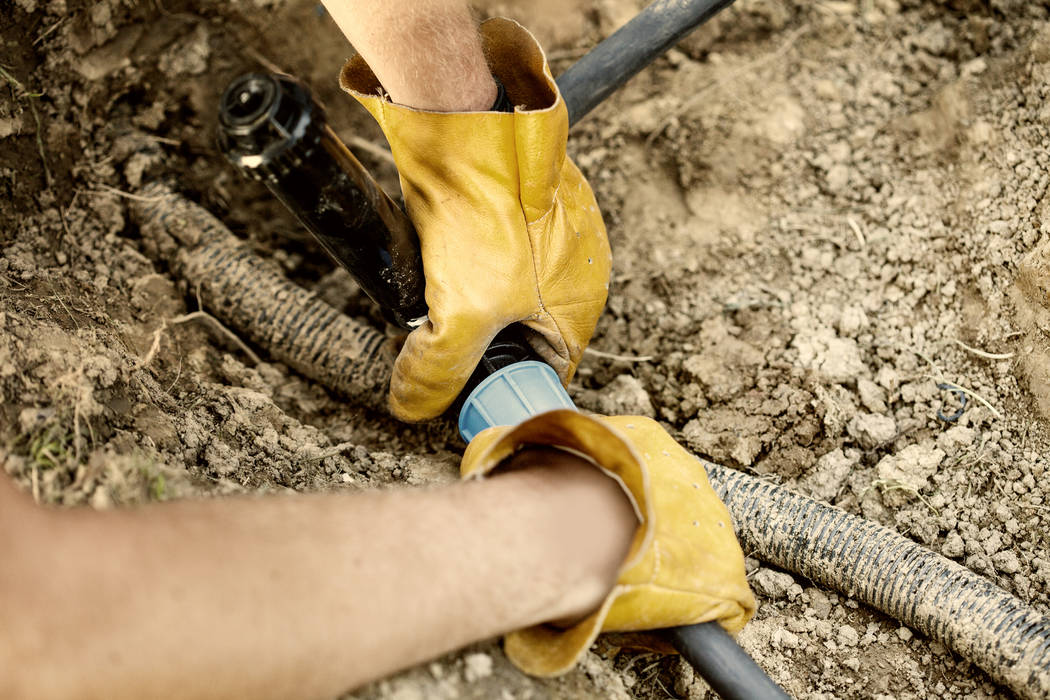Anti-siphon valve prevents leaks into potable water system
Q: I have a problem with my sprinkler system. At the front of my house are two sprinkler pipes that come out of the ground and are connected by some type of valve. This valve is leaking and I need to fix it. Tell me how.
A: You have a leaking anti-siphon valve. An anti-siphon valve is a generic term for a device that prevents unsafe water from entering your potable water system. It can be built into your sprinkler valve for protection at one station, or you may have a device installed at the beginning of your sprinkler system that blocks water from all of the valves downstream of it, such as a pressure breaker valve.
So what is a siphon, you ask? Think back to your days in high school when someone desperately needed gasoline. We had a buddy we called the human siphon for his expertise at stealing gasoline from another friend’s vehicle. The human siphon would stick a tube into the gas tank of the victim’s vehicle, suck on it to start the flow of gasoline and stick the other end of the tube into his own gas tank. Once the flow of gas started, gravity and vacuum took over to continue the flow. The victim never did figure out why he started getting such good mileage after graduation.
With your sprinkler system, if the water pressure significantly drops, water from the lawn can siphon back through the pipes and into your potable water system. This means that fertilizer, weed killer, pesticides and whatever else might be on your lawn could make its way to your faucet.
An anti-siphon valve is a one-way valve that prevents this. It can have a rubber diaphragm that prevents backups, a spring-loaded check valve, or an air relief valve.
In some cases, the easiest way to stop the leak is to buy a replacement valve. This is inexpensive if it’s plastic, but if it is a brass pressure breaker valve, it’s much cheaper to buy a repair kit. Some plastic valves do not disassemble, so you will be forced to buy a new valve.
This is a matter of cutting off the old valve, screwing a male adapter (use Teflon tape at the threads) onto the new one and gluing that section back on to the pipes. Just remember that to be effective, the valve must be a minimum of 12 inches above the highest piping and outlet downstream of it.
For the more expensive pressure breaker valves, a rebuilding kit costs about $30, and you can find them at home centers or nurseries.
Start by turning off the water to the valve and removing the screws that hold down the cap. Inside the valve will be a plastic bonnet that you turn counterclockwise to remove.
The rebuilding kit will have the parts necessary to repair your valve, but some kits have the parts partially assembled, whereas others have you follow the diagram included with the kit to reassemble the check valve. Either way, it’s a matter of placing the parts back into the valve body according to the diagram in the kit and then screwing the cap back on. Turn the water supply back on and you’re done.
By the way, you also should install screw-on anti-siphon devices onto all of your hose bibs. These just screw on and tighten down with a screw. They sell for about $5, and it’s cheap insurance.
Mike Klimek is a licensed contractor and owner of Las Vegas Handyman. Questions may be sent by email to handymanoflasvegas@msn.com. Or, mail to 4710 W. Dewey Drive, No. 100, Las Vegas, NV 89118. His web address is www.handymanoflasvegas.com.
Do-it-yourself
Project: Anti-siphon valve
Cost: From around $30
Time: 1-2 hours
Difficulty: ★★★























